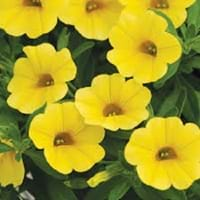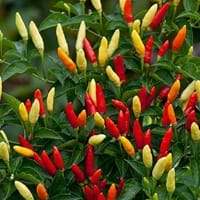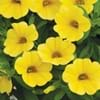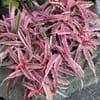Life Span
Perennial
Perennial
Type
Tender Perennial
Tender Perennial
Origin
Hybrid origin
Central America, South America
Types
Crackling Fire , Tangerine , Terra Cotta , Trailing Sky Blue , Cherry Pink
Not Availble
Number of Varieties
Not Available
Habitat
All sorts of environments
Tropical regions
USDA Hardiness Zone
9-11
10-15
Sunset Zone
2a, 2b, 3a, 3b, 4, 5, 6, 7, 8, 9, 10, 11, 12, 13, 14, 15, 16, 17, 18, 19, 20, 21, 22, 23, 24
A1, A2, A3, H1, H2, 1a, 1b, 2a, 2b, 3a, 3b, 4, 5, 6, 7, 8, 9, 10, 11, 12, 13, 14, 15, 16, 17, 18, 19, 20, 21, 22, 23, 24
Habit
Not Available
Upright/Erect
Flower Color
Pink, Rose, Peach, Ivory
White, Light Green
Flower Color Modifier
Bicolor
Bicolor
Fruit Color
Not Available
Yellow, Red, Orange, Dark Red, Light Green
Leaf Color in Spring
Green
Green
Leaf Color in Summer
Green
Green
Leaf Color in Fall
Green
Green
Leaf Color in Winter
Light Green
Light Green
Plant Season
Spring, Summer, Fall, Winter
Spring, Summer, Fall
Sunlight
Full Sun, Partial Sun
Full Sun, Partial Sun
Type of Soil
Loam, Sand
Loam
The pH of Soil
Acidic, Neutral
Neutral
Soil Drainage
Well drained
Well drained
Bloom Time
Indeterminate
Indeterminate
Tolerances
Drought
Drought
Where to Plant?
Ground, Pot
Ground, Pot
How to Plant?
Seedlings, Vegetative Reproduction
Seedlings
Plant Maintenance
Medium
Medium
Watering Requirements
Keep ground moist, Keep the Soil well drained
Requires regular watering
In Summer
Lots of watering
Lots of watering
In Spring
Moderate
Moderate
In Winter
Average Water
Average Water
Soil pH
Acidic, Neutral
Neutral
Soil Type
Loam, Sand
Loam
Soil Drainage Capacity
Well drained
Well drained
Sun Exposure
Full Sun, Partial Sun
Full Sun, Partial Sun
Pruning
Remove damaged leaves, Remove dead branches, Remove dead leaves, Remove deadheads
Cut or pinch the stems, No pruning needed in the early stages, Remove deadheads
Fertilizers
All-Purpose Liquid Fertilizer, slow-release fertilizers
All-Purpose Liquid Fertilizer
Pests and Diseases
Pest Free, Red blotch, Viruses
Pests and diseases free, Red blotch
Plant Tolerance
Drought
Drought
Flowers
Showy
Insignificant
Flower Petal Number
Single
Single
Foliage Texture
Medium
Medium
Foliage Sheen
Matte
Glossy
Attracts
Birds, Butterflies, Hummingbirds
Bees, Flying insects
Allergy
Unknown
no allergic reactions
Aesthetic Uses
Mixed Border, Showy Purposes
Showy Purposes
Beauty Benefits
Not Available
Not Available
Environmental Uses
Air purification
Air purification
Medicinal Uses
No Medicinal Use
Antiseptic, Diaphoretic, Digestive disorders
Part of Plant Used
Not Available
Fruits, Leaves
Other Uses
Beneficial species for attracting pollinators, Not Available
Culinary use, Used As Food, Used as a spice
Used As Indoor Plant
Yes
No
Used As Outdoor Plant
Yes
Yes
Garden Design
Bedding Plant, Container, Hanging Basket, Mixed Border
Edible, Herb / Vegetable, Tropical
Botanical Name
CALIBRACHOA 'Balcabpea'
CAPSICUM frutescens
Common Name
Cabaret™ Peach Calibrachoa, Calibrachoa, Peach Million Bells
Tabasco Pepper
In Hindi
million bells
काली मिर्च टबैस्को
In German
million bells
Tabasco Pfeffer
In French
million bells
Tabasco poivre
In Spanish
million bells
Tabasco Pepper
In Greek
million bells
Tabasco πιπέρι
In Portuguese
million bells
Tabasco pimenta
In Polish
million bells
papryka tabasco
In Latin
million bells
Tabasco Pepper
Phylum
Magnoliophyta
Tracheophyta
Class
Magnoliopsida
Magnoliopsida
Order
Solanales
Solanales
Family
Solanaceae
Solanaceae
Genus
Calibrachoa
Capsicum
Clade
Angiosperms, Asterids, Eudicots
Angiosperms, Asterids, Eudicots
Tribe
Not Available
Not Available
Subfamily
Not Available
Solanoideae
Number of Species
Not Available
Season and Care of Million Bells and Tabasco Pepper
Season and care of Million Bells and Tabasco Pepper is important to know. While considering everything about Million Bells and Tabasco Pepper Care, growing season is an essential factor. Million Bells season is Spring, Summer, Fall and Winter and Tabasco Pepper season is Spring, Summer, Fall and Winter. The type of soil for Million Bells is Loam, Sand and for Tabasco Pepper is Loam while the PH of soil for Million Bells is Acidic, Neutral and for Tabasco Pepper is Neutral.
Million Bells and Tabasco Pepper Physical Information
Million Bells and Tabasco Pepper physical information is very important for comparison. Million Bells height is 15.20 cm and width 30.50 cm whereas Tabasco Pepper height is 71.20 cm and width 60.00 cm. The color specification of Million Bells and Tabasco Pepper are as follows:
Million Bells flower color: Pink, Rose, Peach and Ivory
Million Bells leaf color: Green
Tabasco Pepper flower color: White and Light Green
- Tabasco Pepper leaf color: Green
Care of Million Bells and Tabasco Pepper
Care of Million Bells and Tabasco Pepper include pruning, fertilizers, watering etc. Million Bells pruning is done Remove damaged leaves, Remove dead branches, Remove dead leaves and Remove deadheads and Tabasco Pepper pruning is done Cut or pinch the stems, No pruning needed in the early stages and Remove deadheads. In summer Million Bells needs Lots of watering and in winter, it needs Average Water. Whereas, in summer Tabasco Pepper needs Lots of watering and in winter, it needs Average Water.





